Among all pathological processes that affect the spine in different parts, cervical osteochondrose is considered one of the most common and more painful ones.This disease leads to many complications, mainly because it affects the spinal cord, and also negatively affects the functioning of the brain.
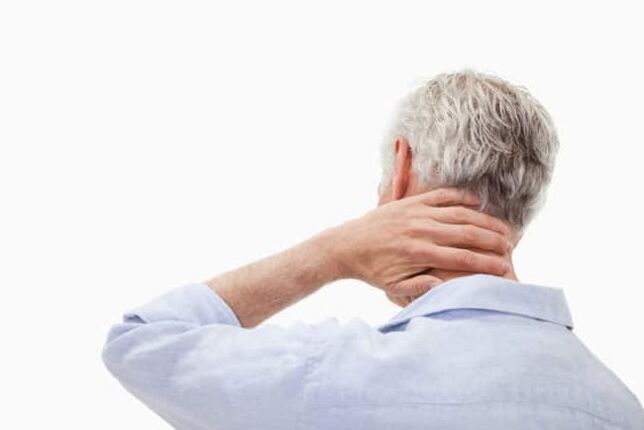
What is cervical osteochondrose?
The words of cervical osteochondrosis in medical practice mean the acquired progressive disease that affects the specific spine.This pathological process is characterized by degenerative-dystrophic processes in the tissues of intervertebral discs, which are shock absorbers for cervical vertebrae.Degenerative-dystrophical changes in interfaced discs occur due to the fact that they are deleted and deformed.As a result, the distance between vertebral is reduced and the following consequences appear as a result:
- Keeping the spinal channel in certain areas of the spine.
- Passing spines - large blood vessels that provide blood supply to the brain.Which of the brain supply exists and circulation of blood in the cervical spinal cord, is disturbed.
- Intervertebral discs can be deformed and flattened.This leads to the squeezing of certain parts of the spinal cord and nerves, more often, the nervous roots are compressed.
All these problems are threatening not only by violating blood circulations of brain, painful sensations in the neck, headache, etc.Development of osteochondrose The cervical region is dangerous with the problems of neurological nature, by deteriorating the brain tissue.According to the international classification of the disease, several separate codes of osteochondrosis of the cervical region were granted.The ICB 10 disease code depends on the age of the disease: the disease was diagnosed:
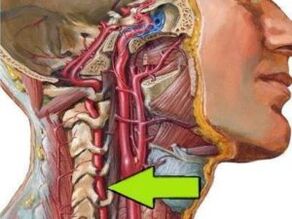
- M02 - Distrophy of intervertebral discs in adolescence.
- M42.12 is a dystrophic process in the neck in adults.
A lot of factors depend on the age of the patient and the degree of development of the pathological process, for example, consequences, complications, symptoms and, of course, treatment principles.
Causes
Knowledge of developing the development of osteochondrose Cervical region can play a decisive role in the diagnosis process, as well as determining the principles of the fight against pain.However, before state the reasons, it is worth saying that doctors differ two factors leading to the development of this pathological process:
- Pathological - destruction of intervertebral disks and other vertebrates with the involvement of nearby tissues, blood vessels and living beams in the pathological process under the influence of harmful external factors.The harder these factors and other pathology, faster the disease develops.
- Physiological - Based on the development of pathology, mostly old age - deleted changes.We are talking about the natural aging of cartilage tissues in the spinal column, salt, etc.
If we list the more specific causes of cervical osteochondron, they are as follows:
- Breach of metabolic processes in the body, as well as certain phases of obesity.
- Hypodynamia is a phenomenon characterized by mobility restriction.It's not just about injuries or diseases, it can include and sitting a lifestyle and sitting work.
- Cardiovascular system travel, contributing to the injured party circulation in the brain, pressure changes and other things.
- Improper posture, these are different forms of scoliosis, rheumatism, and even straight feet.
- Injecting the neck spine.In this case, we are talking about the spaces, strikes, bruises.Research on the second spine in the development of cervical osteochondrosis may affect the development of cervical osteochondrose.
- Excessively large physical effort on the cervical region caused by intensive sports or difficult physical difficult, depending on the type of human activity.
- The sedentary lifestyle is also dangerous with the constant tension of the neck spine and the entire spine, if you do not place incorrectly or on uncomfortable furniture.
- Hernia of the neck spine, as well as various related diseases.
- Forced a long-standing head of head in an uncomfortable or unnatural position.In this case, they do not appear not only for the resistance of the muscle, but the spine is curved in the cervical region.
- Doctors consider constant stress and nerve surge on very common.
- One reason is also considered innate anomalies in the structure of the spine.
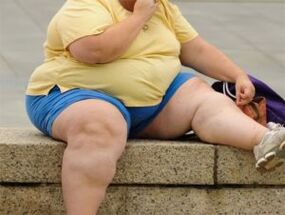
What is the danger to health?
As mentioned earlier, in the neck spine, there are not only spinal cords and various nerve branches, but also spinal arteries that supply the occipital part of the brain, brain, and Medullavian brain.With the development of cervical osteochondrose, the nearby tissues are inflamed.In addition, the development of pathology threatens to narrow the roots of nerves and transfer blood vessels, the consequences are as follows:
- Osteochondrosis monitors the spine deformations, consequence that the cerebrospin channel is narrowed in certain areas.This can lead to the squeezing of the spinal cord and nervous branch, which promises serious neurological problems.In severe cases a person feels pain, even there is the possibility of losing control over individual parts of the body (mainly in hand or faces).
- Solid containers doors, as already mentioned, monitors blood circulation violation in the occipital area of the brain.At the same time, the brain ceases to receive oxygen and nutrients in the required quantities, starts starving oxygen.There is a real risk of ischemic stroke and various neurological pathologies with circulatory disorders.
Syndrome
The main syndromes are:
- Vertebral.
- Vertebral artery.
- Koreshka.
- Sincerely.
It is important to know that each of these symptoms monitors painful sensations of different nature, as well as a lot of unfavorable clinical signs.A person can feel dizziness, noise appears in the ears and more.
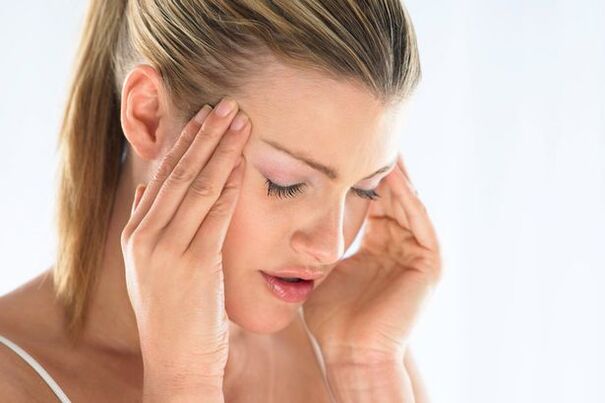
Vertebral syndrome
He talks about a direct relationship of osteochondrose of the cervical region with bones and cartilage tissues.Symptoms in this type of pathology are also related to the lesion of the mentioned tissues:
- Door movements are partially or completely restricted.
- Head movements are followed by pain in the neck.
- X -Ray shows morphological changes in the tissues (intervertebral and in the body of vertebrae).
It is worth noting that the vertebral syndrome is always accompanied by these three clinical signs.If at least 1 is absent, the diagnosis will be completely different.
Rook syndrome
It occurs when the roots of the spinal cord is damaged.At the same time, nervous conductivity is upset, a person can feel pain or lose sensitivity of individual parts of the body or even suffer from paralysis.Depending on of 8 radio cable pairs, there is a conductivity disorder, such symptoms differ:
- 1 pair - stiffness or pain in the back of his head;
- 3 pair - violation of chewing reflexes, tensions of language and unpleasant sensations behind their ears;
- 4 pair - punch in the clavicle, breach of swallowing reflexes;
- 5 pair - shoulder violations, followed by the problem of hand movements;
- 6 Par - Patient begins to feel pain and numbness in transactions and shoulders;
- 7 Par - arms and fingers go dead (often index and middle);
- 8 Couple - problems similar to a past subject, but March feels in the ring and a small finger.
Cardian syndrome
Despite the fact that the pathological process is still localized in the Grlić spine, the syndrome has all the signs of heart pathology.The clinical picture is as follows:
- Rapid pulse.
- Pain in the Sternum region.
- Shortness of breath, weaknesses, lethargy, performance reduction.
Signs and symptoms of cervical osteochondorosis
For timely seeking doctors, it is necessary to clearly understood the signs of cervical osteochondrose.In some cases, such knowledge is allowed to seek help in the initial phases of the disease, when it is easier to treat.Generally, the symptoms for osteochondrose of cervix are the following:

- Osteochondrose pain is always present, only intensity and frequency differ.The pain is the first clinical sign.Their intensity depends on the stage of the promotion of the disease, in nature are stupid or grip.The painful sensations are present mainly in the neck of the Occipital region, but they can also radiate on the time region, belt and hands.
- In most cases, there are eviction manifestations of the vestibular apparatus.We are talking about frequent unreaching dizziness, nausea, weakened coordination of movement, uneven walking, loss in space.
- One of the most common clinical signs is the rigidity of the neck muscles and stiffness of the movement.It is difficult for a person to turn, descend and throw his head, the movements fit with pain.
- Many patients record the feeling that goosebumpks "pass through the scalp" or characteristic tingling.
- There is muscle weakness and stiffness in the area.
- There are often psychological manifestations, expressed in depression, drowsiness, sharp changes in mood, temperament, or irritability.
- Due to the damaged blood circulation and brain tissue damage, the dizziness also appears in the ears, similar to rustling, pulsation, ring.
- Most patients have visual impairment, as well as pain in eyeballs, especially when trying to mow the eyes left, right, up or down.
Sometimes it is possible to determine the degree of development of pathological processes symptoms.However, for a complete diagnosis of this, this is still not enough, and it is necessary to a series of diagnostic measures.
Diagnostic methods
The diagnosis of osteochondrose of the cervical spine is necessary to determine the localization and phase of the disease promotion.For a complete diagnosis, such diagnostic methods are required:
- X -RAY - the primary method that allows you to determine the degree and localization of the deformation of the spinal column.
- You can use computer tomography for more accurate diagnosis of pathological changes in vertebral and interveregni discs.
- MRI (Magnetoresonance painting) - allows you to examine the wheels and vertebrae in detail, determine the presence of the kile, protesting and scale of the lesions of others.
- Dopplerography - Simultaneous examination becomes the possibility of finding a place to acquire arteries, assess the degree of circulation disorders.
Methods of treatment
Treatment of osteochondorosis doors always implies an integrated approach.The principles of treatment depend on the mass of factors, such as patient's age, disease development phase, brightness of clinical images, etc.Still, you can't do without a doctor in this situation and above all you can contact a therapist that will then direct you to the therapist.As for integrated access: osteochondrosis of cervical osteochondrosis is treated with drug therapy, physiotherapy, massages, exercise therapy and other methods that should be discussed in more detail.
Medicine treatment
The basis for cervical osteochondrose treatment is drug therapy, which includes the use of tablets, drugs and drugs of such groups:
- Anesthetics - analgesics and antispasmodics.Former direct nervous centers, which stops painful sensations.The latter allows you to mitigate the cramps of the door door, establishing blood flow and suppress pain.
- NSAIDs - non-asteoid anti-Inflamatory drugs are needed to reduce the inflammatory process, most of them also eliminate pain.Often these medications are used in the form of gels, grease that rubs into the affected area.
- Musorelaxians are another way of removing muscle cramps in the cervical region.
- Chondroprotectors are required at certain stages of osteochondorosis chops, because they contribute to rebuilt tissues.
- B Vitamins - Normalize the metabolic processes of nerve tissues, improving the conductivity of nerve pulses and contribute to the work of the central nervous system.
Remember, treatment should only be performed under the supervision of the doctor, which is responsible for the appointment of any medicine, as well as determining the duration of its entry and dosing.
Physiotherapy
Treatment of osteochondorosis of the door will be many times more efficiently using some physiotherapy techniques:
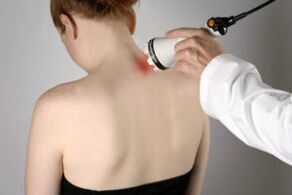
- Electrophoresis.
- Laser therapy.
- Ultrasound.
- Massage.
The therapy of the massage necessarily performs an experienced health professional, treatment is performed during at least 10 sessions.The massages of the cervical region help in the normalization of blood circulation, restoring elasticity, muscle tone, relieve pain, etc.
Hand therapy
Manual therapy is based on the principle of recovery of motor functions and mobility between vertebral.At first, manipulations are in a light relaxing massage, then the doctor attaches more and more power, acts on the vertebrae of pressure and rotated doors.
The use of Kuznetsov applicator is one of the methods of therapy for spine diseases, including osteochondrose.The effect of adaptation on the cervical region normalizes metabolic processes, relieves pain, improves muscle tone, improves the conductivity of nerve tissue, etc.To prevent osteochondrose, it is useful to deal with swimming and maintenance of the horizontal strip in 2-3 minutes each day.


























































































